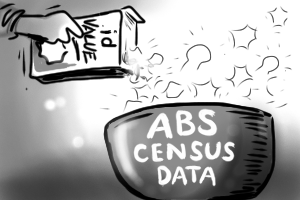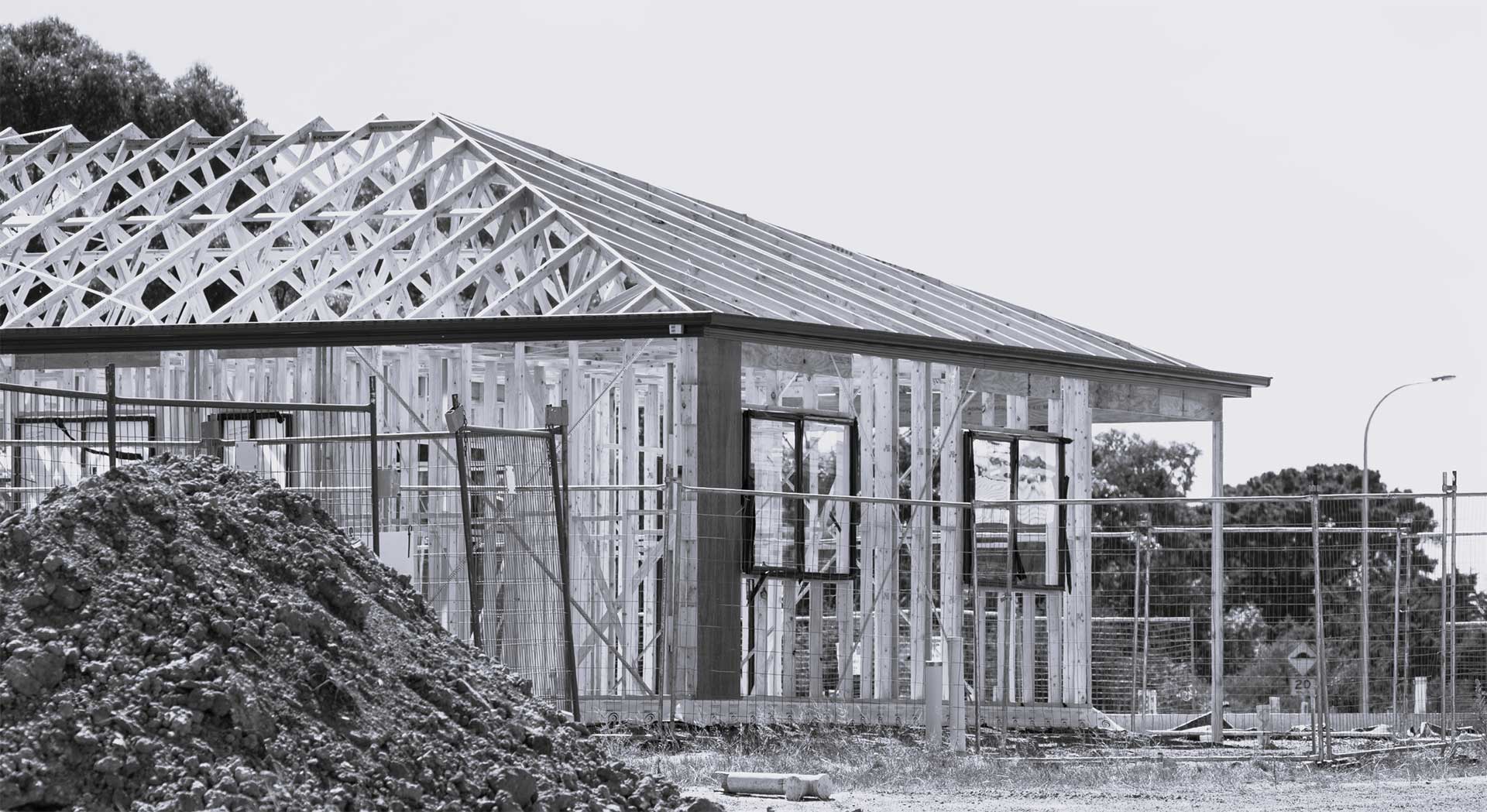.id regards the ABS website as a fantastic resource for raw data pertaining to Australian society. The ABS run one of the most comprehensive and high quality Censuses in the world, so Local Government in Australia is fortunate to have access to a great repository of demographic data to help them tell the story of their communities. It has long been our position that such valuable data should be available free of charge to the widest possible audience in order to promote better decision making at all levels of society.

As an official Intermediary of the ABS, .id has been at the forefront of delivering value-added Census information specifically tailored to the needs of local government for 15 years. Offering detailed profiles for over 75% of the Australian population, .id’s profile.id online information product has become established as the industry standard for the delivery of this type of data for local government.
There are a number of ways in which profile.id differs from the ABS website which are outlined below.
Minimise costs
Whilst ABS data is freely available on the website, it is still a very time consuming job requiring considerable expertise to convert that data into useful information for decision making. Producing community profiles in-house typically takes between 12-18 months for 1.5 people (a senior officer and analyst) at a cost of at least $80,000 (including salaries). This project would still need to be undertaken regardless of the free availability of ABS data.
Improve efficiency
profile.id is complementary to the Australian Bureau of Statistics Census products and answers around 80% of frequently asked socio-demographic questions. This enables Council officers to focus on the core business of delivering services to the community rather than spending valuable resources extracting data and crunching numbers. When recourse to the ABS products is required, Council officers will be researching much more strategic and targeted information.
Benchmarking
All data and charts in profile.id are benchmarked to a choice of wider areas, including City, State and National, as well as optional custom benchmarks for each LGA. This enables councils to see at a glance the role and function of their area in a wider context, and how each suburb and locality differs from the average for the LGA or region.
Time series
Most datasets in profile.id are available for the 1991, 1996, 2001, 2006 and 2011 Censuses, on a consistent geographic basis, meaning that short and longer term trends within each suburb are clearly visible and charted on the site. Along with benchmarking, this is a powerful tool for telling the demographic story of the area in terms of questions like “How does this area compare to our region?” and “How is this area changing over time?”. This enables councils to plan effectively for service delivery in each district of their LGA.
Customised geography
One of the most important benefits offered by .id is our ability to customise the geography we use to build your profile so that it matches your communities of interest and therefore supports local area planning processes. This is essential for local government which often requires information for communities of interest (neighbourhoods, suburbs, and planning districts) that do not correspond with ABS boundaries. The geographic areas produced by ABS, including “SA2s”, “State Suburbs” and “Postal Areas” often don’t equate to logical communities on the ground. They are often a “best fit” of ABS defined areas to local geography, and most importantly that “best fit” changes from Census to Census, so it is difficult to find a trend over time from amongst the noise of changing boundaries. The “State Suburbs” used by the ABS rarely equate to the official gazetted suburb boundaries, and the boundaries they use are current only for one Census year. This is particularly important in 2011, with the ABS moving to an entirely new set of boundaries which not only don’t relate to those previously used, in most cases they don’t even align to Local Government Area boundaries!
.id’s key value add is concording the boundaries used in each Census to a consistent set of boundaries which are relevant to the local area and represent the same areas from the 1991 through to the 2011 Census. id customizes geography so that it fits recognised boundaries in each Census year. We look at how areas have changed over time and make small adjustments to the data for any geographic mismatches on an area-by-area basis to ensure that you can have confidence in the data over time.
Customised datasets
.id makes relevant adjustments to the Census classifications to make them more relevant to Local Government planning. For instance, cross-classifying household type by life stage to help LGAs understand the position of areas in the suburb life cycle.
Risk minimisation
Producing quality community profiles requires considerable expertise. This fact is often misunderstood and leads to sub-standard output and incorrect analysis. For example, we have seen consultant reports which identify a change in the industrial base of an LGA (demise of manufacturing). On closer inspection we found that the industrial base had not changed significantly, but the consultant had not picked up on category changes in Census data between censuses. This is a common pitfall when deriving Census data directly from the ABS website, particularly when comparing over time.
profile.id is produced by expert demographers giving you complete confidence in the accuracy of the information you are using to make crucial decisions.
Background information and data notes
On each page of profile.id, we give you the full context of each dataset, so you can make an informed decision, not only on the data itself, but how relevant it is for the question you are trying to answer. Included with each dataset is:
• A statement as to how the data was derived, i.e. exactly which Census question produced this data. This is an especially important reference for ambiguous measures, such as income (is it weekly or monthly? Individual or household? Gross or net? etc)
• An indication of what other Census variables should be consulted in order to give more meaning to the data.
• Detailed data notes on the categories included, any issues with how the question was asked or how it can be used, and any issues with comparison over time.
Online delivery
There are significant advantages to delivering Census information in an interactive online application, as opposed to PDF reports or data downloads. These include:
• Giving access to demographic data across Council AND the community – thus elevating evidence in the decision making process.
• Making demographic data widely available to local businesses and potential investors to support their decision making
• Delivering a consistent message across Council and the community
• Navigation which is designed to encourage the exploration of demographic information – to enable users to weave stories, test hypotheses, and make good decisions.
Ease of use
The intuitive interface, supporting context, and use of everyday language mean that profile.id is accessible to even the most inexperienced user. The site does not require prior knowledge of the complexities of Census data, nor specialist demographic or geographic expertise. Users are empowered to quickly and efficiently ‘self serve’ their information requirements rather than relying on an overburdened ‘resident expert’ within Council, or alternatively resort to ‘gut feel’ because they do not feel have the time or ability to research the data themselves.
Complete export functionality
All tables, charts and maps in profile.id and it’s mapping module, atlas.id, can be exported in a variety of formats including Word, Excel and PDF, for complete integration with your own reporting.
Support and client relationship
.id’s business model designed to encourage a long-term relationship with our clients. In effect, we see ourselves as a demographic extension to your team – delivering demographic information, advice, expertise and support.
When you purchase an .id information product, you don’t just purchase the product, it entitles you to the full support of .id’s demographic experience in your decision making process. Included is phone and email support – councils can use .id as their on-call demographic resource
– to call or email us at any time with questions or queries about the products or demographics in general. We can also source additional data sets from the ABS as required, using our knowledge of the best Census data to answer particular questions.
A major part of the ongoing support is a training program for council staff, executive, councillors and associated community groups.
The training program is an annual education package designed to enhance council staff’s understanding of demographics and their role in evidence based decision making, and give staff more of an insight into the characteristics of the LGA and how they are changing, as well as teaching the basics of using the information tools. This is intended to elevate the role of data and evidence in decision-making across council.
Training includes the following on an annual basis:
• Executive staff demographic briefing on key trends in the area.
• Staff training in the use of the site and telling the demographic story of the area.
• New staff training as part of council inductions.
• Advanced staff training in utilizing Census data hands-on with an experienced facilitator.
• Training for community groups and elected councillor briefings.
Encouraging access
Most councils want their community profile to be accessed by all their staff and their community – including community groups, schools, students, local businesses and potential investors. .id supports this by delivering Census information in publicly available websites and ensuring that they are easily found by search engines. You can access all of the profile.id websites here.










